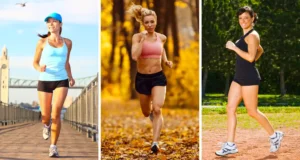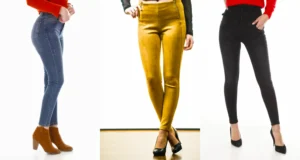Fashion for women has changed a lot over thousands of years. Learn how styles evolved from long ago until now. People from 30,000 years ago decorated with beads and paint. That started the changing looks over time.
In Ancient Egypt, rich ladies wore fancy wigs and jewelry. In the Middle Ages, outfits followed church rules. Baroque dresses had huge hair under bird-like hats.
Victorians balanced really big skirts down city streets! Flappers showed freedom with short-knee dresses. Today, green trends are set by eco-minded social media stars.
This timeline shows how what we wear reflects changes in each time period. It’s cool to see fashion shifting over history and showing how cultures change, too.
Ancient Fashion
Fashion and style have always been an integral part of human culture and expression, though ancient civilizations had very different ideas of beauty and adornment compared to modern standards.

Archaeological evidence shows that even 30,000 years ago, prehistoric people decorated themselves with beads, bracelets, pendants, and body paint.
One famous example is the Venus of Willendorf, a Paleolithic figurine depicting an obese nude female thought to represent fertility ideals.
Some key facts about ancient fashion:
- Ancient Egyptians (c. 3100 BCE) wore linen clothing, and upper-class women donned elaborate wigs, jewelry, and cosmetics.
- Ancient Greeks wore simple, loose chiton robes pinned at the shoulders and belted at the waist.
- In ancient Rome, fashionable patrician women wore the stola, a long dress with a belt tied below the bust.
The Middle Ages
Medieval fashion between the 5th and 15th centuries was governed by the feudal system, social class, morality laws enforced by the church, and the rise of textile manufacture.
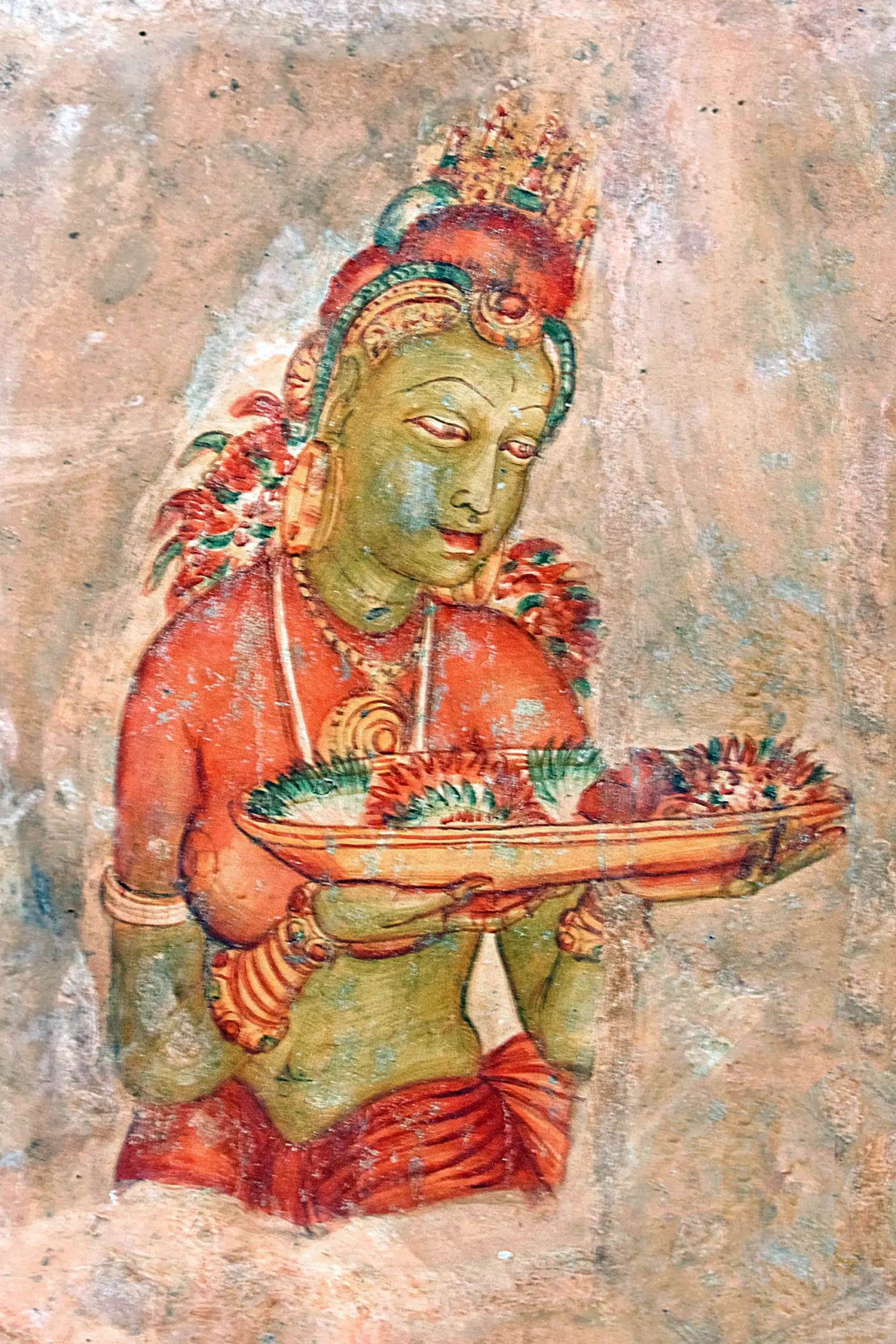
Some key facts about medieval fashion:
- Loose linen shifts remained the undergarment of choice for medieval women.
- Wealthy nobles wore expensive dyed silks and brocades.
- Sumptuary laws restricted clothing materials and styles people were allowed to wear.
- Pointed shoes called poulaines became popular – the longer the point, the higher the social status.
| Clothing Item | Description |
|---|---|
| Surcoat | A long, loose overtunic worn by both men and women of nobility |
| Wimple | A veil attached to a barbette that framed the face and covered the hair |
| Houppelande | Full-length robe with wide sleeves fashionable in the 15th century |
The Early Years: The 1600s to the 1800s
As Europe transitioned from the Renaissance into the Baroque and Rococo eras, fashion became more elaborate and ornate. The French court at Versailles was widely emulated, with trends spreading across much of Europe.
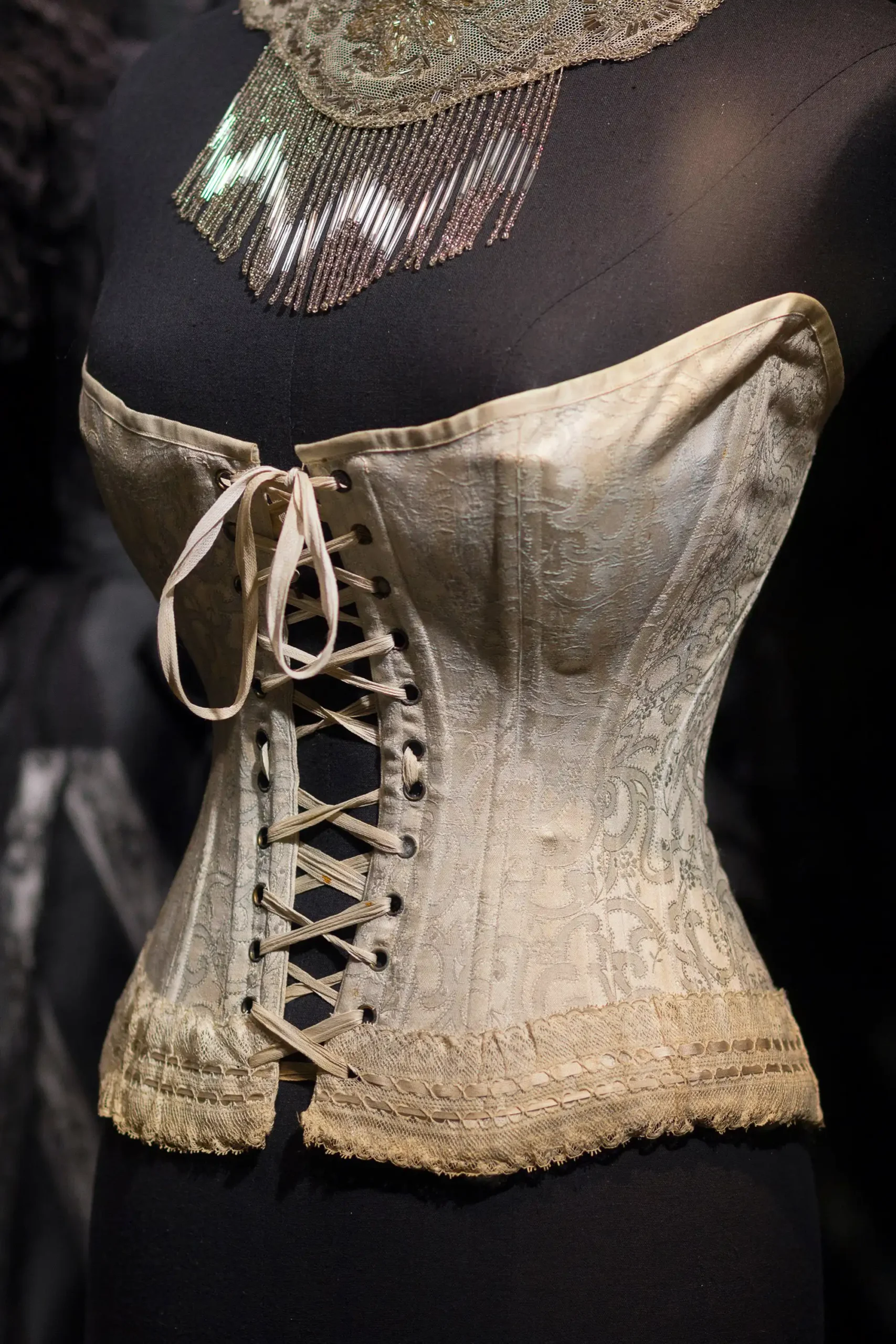
Baroque Opulence: Flamboyant 1600s Fashion
The 1600s saw some wild and lavish fashions emerge! In this era, clothing was a way for nobles and royals to flaunt their status and wealth. Here’s a snapshot of key trends:
- Frilly Ruffs: Giant lace or linen collars up to 1 foot wide became popular with men and women. They required elaborate folding starching and could contain over 10 yards of fabric!
- Corsets: Stiff bodices squeezed torsos into narrow conical shapes. Some were reinforced with whalebone or iron to maintain rigid silhouettes.
- Huge Skirts: Full floor-length skirts were held out by structures like farthingales or panniers. Imagine trying to squeeze through a door!
- High Heels: Women donned towering chopines up to 20 inches high. Servants helped walk behind to prevent toppling over!
| 1600s Fashion Facts | |
|---|---|
| Petticoat Layers | 6-8 |
| Average Corset Size | 16-18 inches |
| Popular Colors | Deep Jewel Tones |
As the 1600s progressed, fashion at Versailles evolved from structured rigidity into a new era of flowing, delicate luxury…
The Flowing Grace of Rococo Style
By the early 1700s, styles shifted towards the delicate aesthetics of Rococo fashion. Billowy robes and pastels replaced stiff formalwear.
- Loose Robes: Flowing sacque gowns and Watteau pleats gave a new airy lightness.
- Delicate Shoes: High heels lowered to a more manageable 2-3 inches.
- Natural Forms: Corsets became less restrictive, allowing fuller hips and busts.
- Pastel Palette: Soft creams, pinks, blues, and gold became popular.
- Intricate Details: Gowns featured fine lace, ruffles, ribbons, and florals.
The rococo style allowed women to embrace comfort and the beauty of nature through clothing.
The Victorian Era: 1830s to 1900s
Queen Victoria’s reign from 1837-1901 oversaw some wild female fashion transformations. Let’s dig into the era known as Victorian fashion!
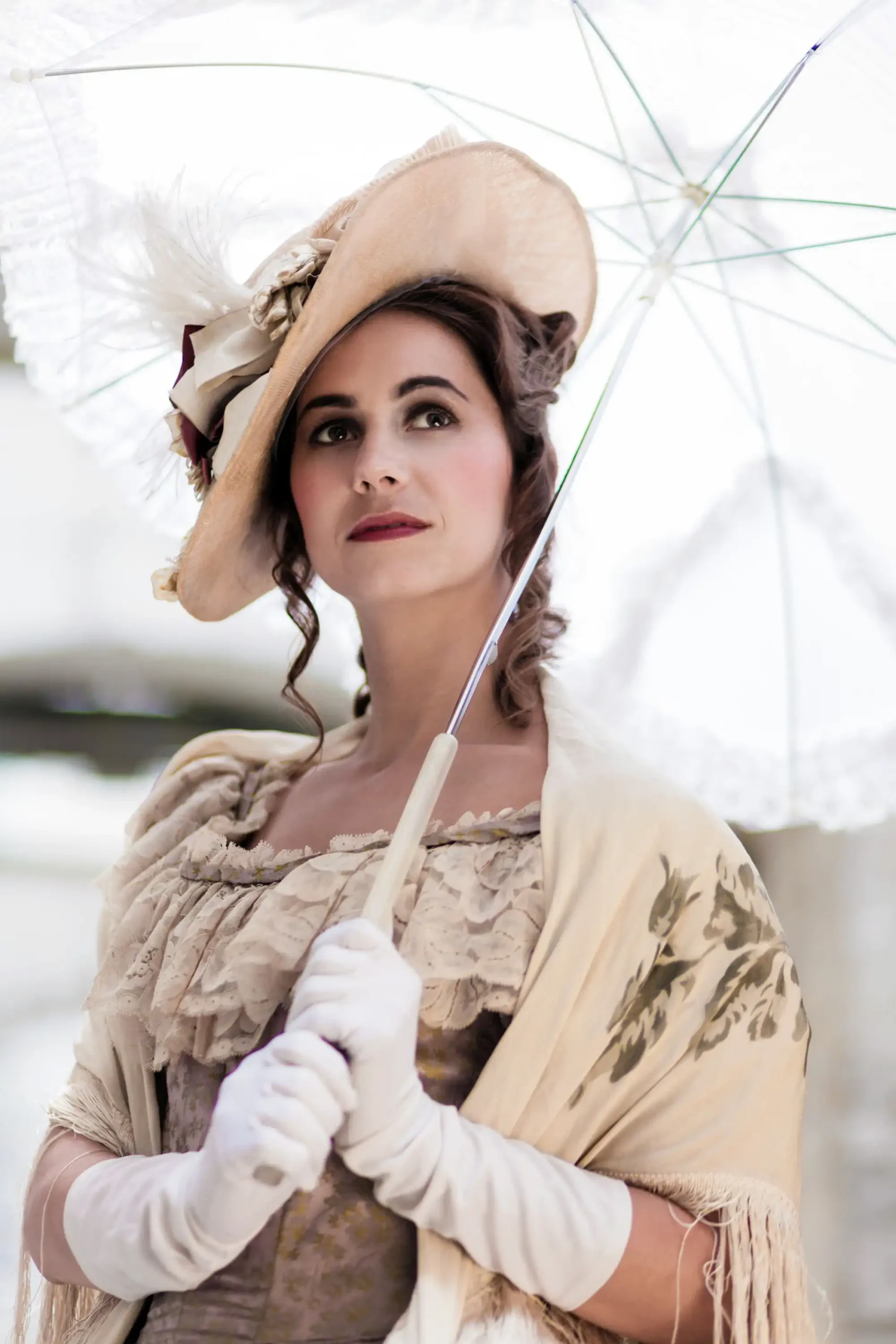
1830s-50s: Romantic & Exaggerated Silhouettes
In the early Victorian period, ladies wore huge dome skirts and tight corsets to achieve striking silhouettes.
- Bold Shoulders: Leg o’ mutton sleeves extended shoulders up to 26 inches wide!
- Tiny Waists: Corsets were tightened to 16-inch circumferences, displacing organs. Yikes!
- Full Skirts: Steel crinolines grew skirts up to 6 feet around. Imagine navigating a bustling city street!
- Sheer Layers: Dresses featured fine, lightweight fabrics like muslin and intricate embroidery.
| Early Victorian Facts | |
|---|---|
| Average Corset Size | 16-17 inches |
| Skirt Circumference | Up to 6 feet |
| Sleeve Size | Often over 22 inches |
As the Victorian era marched on, things would only get more extreme…
1860s-1880s: Bustles, Corsets and Decadence
In the latter Victorian period, bustles replaced crinolines, and dress trim reached new heights.
- Rear Focus: Bustles extended dresses 4-5 feet from waist to hem. Fancy seeing that sashay down the street!
- Polonaise Walk: Walking in long dresses was tough, so women adopted the polonaise style of gathering up the skirts.
- Two Piece Dresses: Bodice and skirts separate enabled more pairings and elaborate drapes.
- Luxurious Materials: Expensive silks, velvets, and lace conveyed status and taste.
The excessive dresses of this era required maids to help ladies dress and undress.
The Early 20th Century: 1900s to 1920s
The early 1900s saw fashion break free from Victorian constraints. Bold new trends emerged, reflecting changing times.
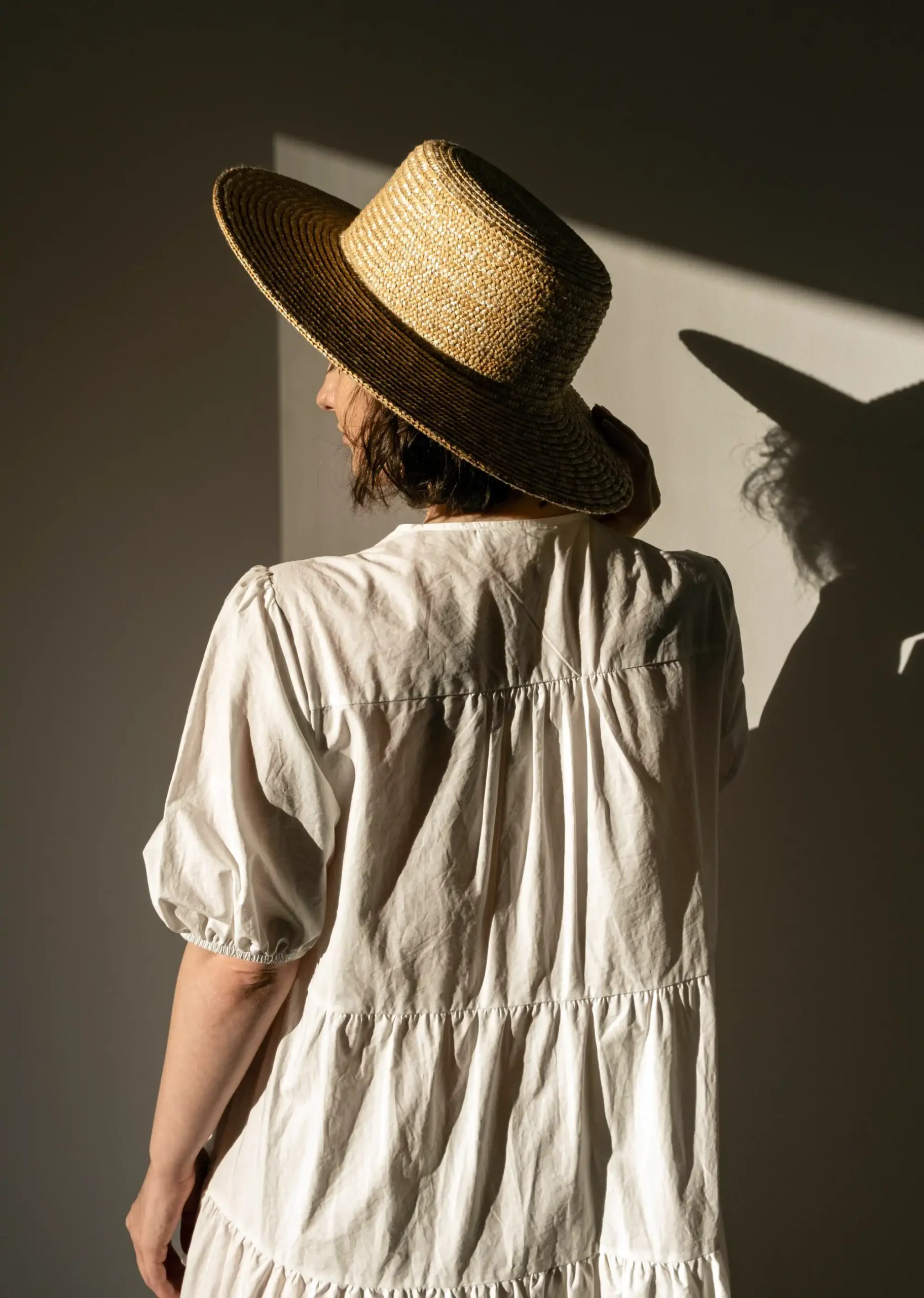
1900-1910s: Lavish Edwardian Opulence
Edwardian fashion at the start of the century upheld the luxury and decadence of the upper class.
- Giant Hats: Huge wide-brimmed hats with plumes were all the rage. Some spanned over 2 feet wide!
- Long Trains: Evening gowns trailed 6 feet behind with elaborate embroidery. Imagine maneuvering at a fancy party!
- Tight Corsets: S-bend corsets forced an exaggerated S-shaped torso. Organs, who needs ’em?
- Button Boots: Fancy lady’s boots with rows of buttons were donned outdoors.
| Edwardian Fashion Facts | |
|---|---|
| Average Corset Size | 17-21 inches |
| Hat Brim Width | Up to 2.5 feet |
| Glove Length | Often 16 inches |
But world events would soon transform fashion’s trajectory…
1910s: Streamlined WWI Utility Styles
WWI necessitated practical, minimalist fashion. Dresses became straight and slim as women took on more active roles.
- Short Skirts: Hemlines daringly rose up to the ankle for greater mobility. Scandalous!
- Smaller Hats: Lavish hats were swapped for practical turbans and caps.
- Tunics & Trousers: Women adopted loose tunics and trousers previously only worn by men.
- Makeup: Dark red lipstick and penciled brows became popular.
This was just a prelude to the liberation that came next…
1920s: Androgynous Flapper Fashion
The Roaring Twenties saw fashion embrace androgyny and female independence like never before.
- Shapeless Silhouettes: Dresses became straight and loose, hiding curves.
- Cropped Hair: Bobbed haircuts freed women from endless styling.
- Makeup: Bold eyes, lips, and foundation transformed facial features.
- Short Skirts: Hemlines rose scandalously to the knee! Stockings exposed.
The 20s revolutionized fashion with looks that captured the newfound freedom of women. What surprises lay in store for the century ahead?
Mid-Century Fashion: 1930s to 1950s
The mid-20th century brought back glamour and femininity with iconic styles from sharply tailored 30s ensembles to full-skirted 50s fashions.
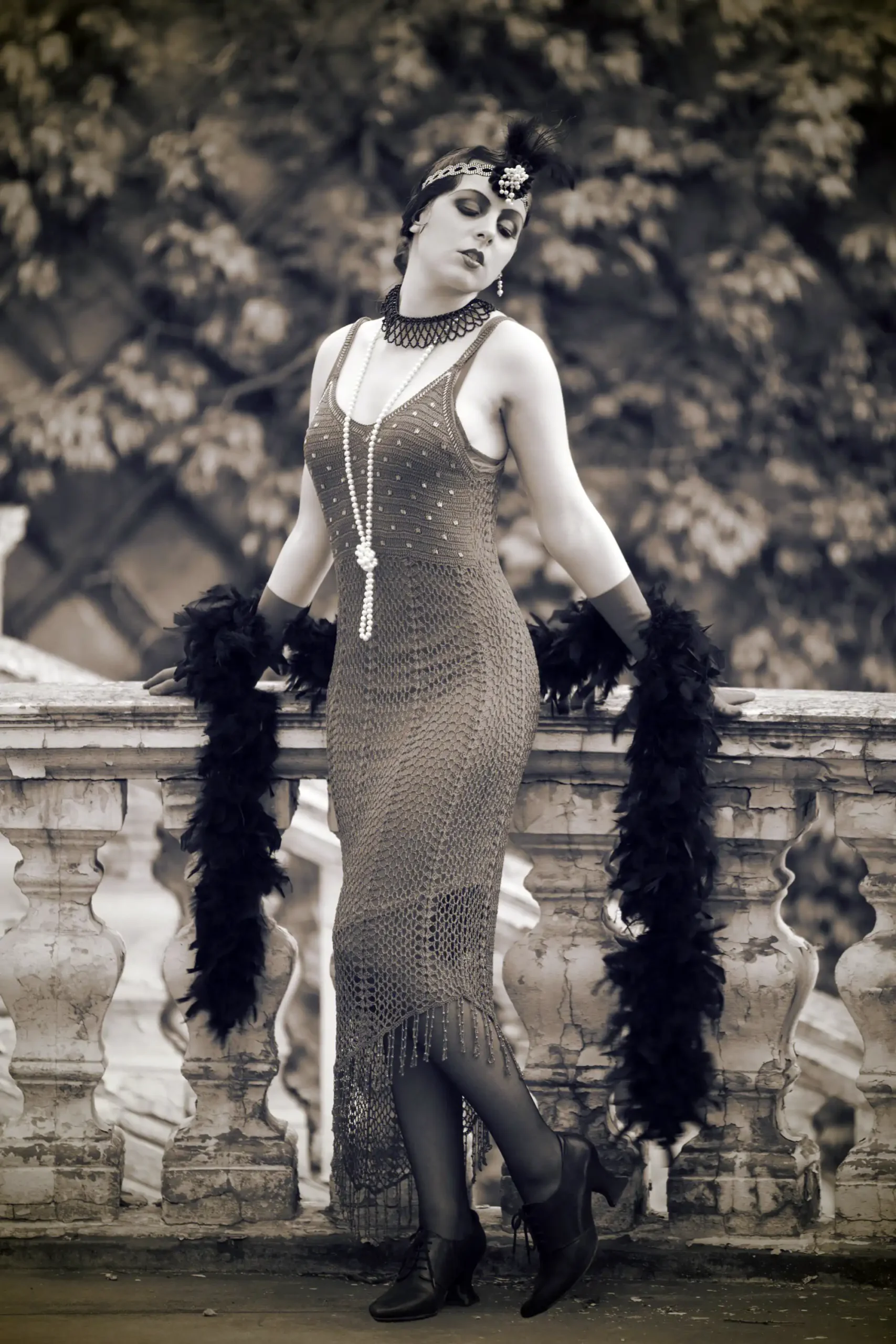
Elegant 1930s Looks: Bias-Cut Gowns and Matching Suits
Women’s 1930s fashion exuded Hollywood glamour:
- Bias-cut gowns with slim silhouettes and cowl drapes
- Tailored skirt suits with wide shoulders, nipped waists
- Peaked picture hats, mesh gloves, brooches
- Hair curled and sculpted in finger waves
- Red lipstick, thin arched brows as makeup
| 1930s Fashion Facts | |
|---|---|
| Common Fabrics | Rayon, lastex, silk chiffon |
| Average skirt length | 15 inches from floor |
| Average heel height | 2-3 inches |
Wartime Rationing: 1940s Women’s Clothing Trends
1940s fashions reflected WWII rationing and utilitarian needs:
- Simple A-line shirtwaist dresses
- Boxy suit jackets with padded shoulders
- Platform wedge shoes, slingback heels
- Short hairstyles, red lipstick, cat-eye liner
- Small hats, turbans, headscarves
The New Look to Poodle Skirts: Iconic 1950s Fashion
Post-war 50s fashion ushered in ultra-feminine silhouettes and playful styles:
- The New Look: Tiny waists, full mid-calf skirts
- Poodle skirts, pedal pushers, capri pants
- Pencil skirts, shrunken cardigan sweaters
- Cat-eye glasses, bullet bras, petticoats
- Bobby socks, saddle shoes, ballet flats
Trends of the Late 20th Century: 1960s to 1990s
The latter decades of the 1900s saw an explosion of bold, innovative fashion, from mod styles to minimalist grunge.
Mod Minis and Bold Prints: 1960s Women’s Fashion
1960s fashion was defined by youth, rebellion, and shifting ideals of beauty:
- Extremely short miniskirts and dresses
- Psychedelic and graphic bold prints
- “Space age” vinyl and plastic futuristic looks
- False eyelashes, pale lips, brightly colored eye makeup
Boho Chic & Disco: 1970s Women’s Clothing Styles
- Flowing maxi dresses, peasant blouses of the bohemian 70s
- Wrap dresses, halter jumpsuits, hot pants for disco
- Bell bottoms, fringe, patchwork, embroidered denim
- Long, straight hair parted down the middle.
Power Dressing and Preppy: 1980s Fashion Trends
1980s fashion saw the rise of exaggerated femininity and conformity to societal ideals:
- Oversized shoulder pads, cinched waists in power suits
- Ruffled poet blouses, pearl necklaces, elite preppiness
- Stiletto heels, short tight skirts, bold accessories
- Big hair, blue eyeshadow, dark lip liner makeup
Minimalism & Grunge: 1990s Women’s Fashion Looks
90s fashion rejected the excess of the 80s, favoring understated minimalism or grungy anti-conformity:
- Slip dresses, minimalist shapes in muted hues
- Flannels, ripped jeans, Doc Martens of the grunge scene
- Crop tops, chokers, mom jeans, Dr Marten boots
- Dark lipstick, little to no eye makeup
21st Century Women’s Fashions: 2000 to Today
The new millennium saw increased diversity in style, eco-conscious trends, and ever-evolving social media influence shaping women’s fashion.

Y2K Fashion Revival: 2000-2010s Styles
The early 2000s ushered in a revival of 90s and Y2K trends:
- Low-rise jeans, cargo pants, rhinestones, metallics
- Velour tracksuits, Von Dutch trucker hats
- Heeled flip flops, whale tail thongs
- Thin eyebrows, frosted eye shadow, glossy lips
Athleisure, Sustainability, and Social Media: 2010s to Today
Comfort, ethics, and Instagram influence have defined recent fashion:
- Leggings, joggers, sneakers, athleisure apparel
- Sustainable fabrics, ethical manufacturing
- Social media and influencer-driven style trends
- Bold lips, sculpted brows, highlighted contours.
Fashion and Technology
Advances in technology have always influenced the evolution of clothing and textile development. Some key examples:

- Sewing machine patented in 1790 – enabled mass production of garments
- Synthetic fibers like nylon, rayon, polyester – new fabrication options
- Digital printing – allows photographic and graphic prints on textiles
- Smart fabrics – conductive threads and nano-treatments for high-tech functions
- 3D design software – virtual prototyping and customization
In the future, tech innovations in areas like wearable technology, biomimicry, and 3D printing could dramatically transform fashion and clothing production.
Sustainable Fashion
In recent years, sustainability has become an important issue in fashion:
- Using eco-friendly fabrics – hemp, organic cotton, recycled textiles
- Implementing ethical manufacturing – avoiding sweatshops, fair wages
- Designing timeless, quality items that endure – avoiding fast fashion
- Reducing textile waste, enabling recycling and upcycling
- Cultivating transparency in the supply chain
Many brands today are adopting principles of social responsibility and ecological stewardship. Sustainability will likely be a driving factor in the future of fashion.
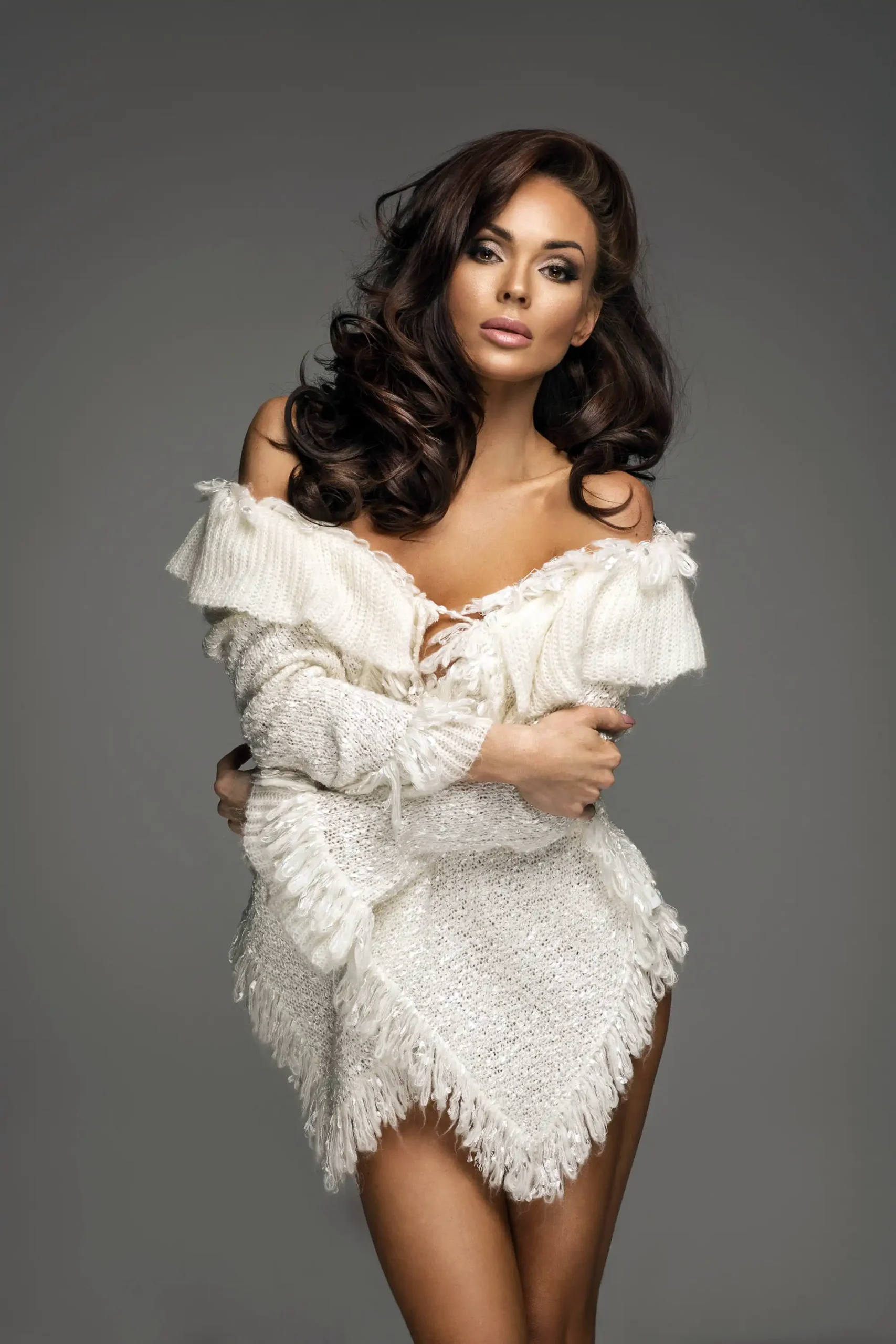
Summary
Fashion tells the story of people through history. Clothes show what cultures value. It’s neat to look back and see how outfits changed with time.
Different eras brought new styles due to events or thinking. Now, sustainability is important in fashion. Makers use eco-friendly fabrics. Workers get fair pay. Trends online set by influencers. Designs last longer instead of just being thrown away.
Maybe someday clothes can be reprinted instead of trashed. Technology will keep changing materials, too. Fashion reflects our lives and what matters to society. This timeline shows how dresses and suits evolve with cultures. It’s fun learning how outfit styles are created to match different eras.
The future is unknown, but sustainability will guide new looks for sure. Fashion’s story across history teaches about people and keeps evolving always.
FAQ
What historical event changed the rules for women’s fashion?
World War I was a major historical event that changed the rules for women’s fashion. Prior to the war, women’s clothing was typically restrictive and impractical. However, the war effort required women to take on jobs they had previously been excluded from, such as factory work and nursing. This led to a demand for more comfortable and functional clothing.
Why did women’s fashion change so much in the 1920s?
The 1920s was a time of great social and cultural change, and women’s fashion reflected this. Women were becoming more independent and assertive, and they wanted to dress in a way that reflected their new societal roles. As a result, hemlines rose, silhouettes became looser, and embellishments were simplified.
What was the biggest fashion trend in the 1920s?
The flapper dress was the biggest fashion trend of the 1920s. Flapper dresses were short, loose-fitting, and often embellished with sequins, beads, and other decorations. They symbolized the new woman of the era, who was confident, independent, and fun-loving.
What were the fads and fashions that became popular during the 1920s?
Some of the other popular fads and fashions of the 1920s included:
Cloche hats: These small, bell-shaped hats were worn by women of all ages and social classes.
Bobbed hair: Short bobbed hair was another popular trend among flappers.
Art Deco jewelry: Jewelry with geometric designs was very popular in the 1920s.
Drop-waist dresses: These dresses had a low waistline that fell just below the bustline.
Knee-high stockings: Silk stockings were a popular accessory for women in the 1920s.
How did women’s fashion change in the 1960s?
The 1960s was another decade of great change for women’s fashion. The mini-skirt became popular, and women began to wear more revealing clothing in general. This reflected the changing social and cultural climate of the time, as women were becoming more assertive and challenging traditional gender roles.


